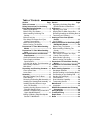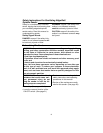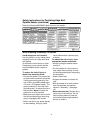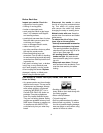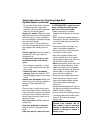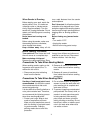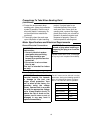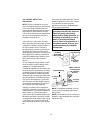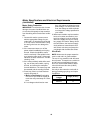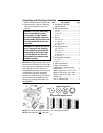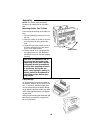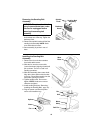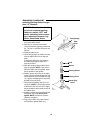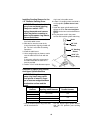
8
Precautions To Take When Sanding Paint
(continued)
4. Protect the environment when
sanding paint. Use a dust collection
system if possible. Seal the work
area with plastic if necessary. Do
not track paint dust outside the
work area.
5. Thoroughly clean the work area
upon completion of paint sanding
project. If project lasts for an
extended period of time, clean
work area often. Items such as
sanding dust, vacuum filter bags,
plastic drop cloths, etc. should be
placed in a sealed container and
disposed of properly. Clean all
items exposed to sanding dust.
Motor Specifications and Electrical Requirements
General Electrical Connections
DANGER: To reduce the risk of
electrocution:
1. Use only identical replace-
ment parts when servicing.
Servicing should be per-
formed by a qualified service
technician.
2. Do not use in rain or where
floor is wet.
This tool is intended for indoor
use only.
WARNING: Do not touch the ter-
minals of plug when installing or
removing the plug to or from the
outlet.
If power cord is worn or cut, or damaged
in any way, have it replaced immediately.
Power Supply and Motor Specifications
WARNING: To reduce the risk of
electrical hazards, fire hazards
or damage to the tool, use
proper circuit protection. Your
tool is wired at the factory for
operation using the voltage
shown. Connect tool to a power
line with the appropriate voltage
and a 15-amp branch circuit. To
reduce the risk of shock or fire,
if power cord is worn or cut, or
damaged in any way, have it
replaced immediately.
The A-C motor used on this tool is a relay
start motor, having the following specifica-
tions: It is wired at the factory for opera-
tion on 110-120V AC, 60 Hz. operation.
Rated H.P. 3/8
Voltage 110-120
Amperes 5.0
Hertz (Cycles) 60
Phase Single
RPM 1725
Rotation of Shaft Clockwise




